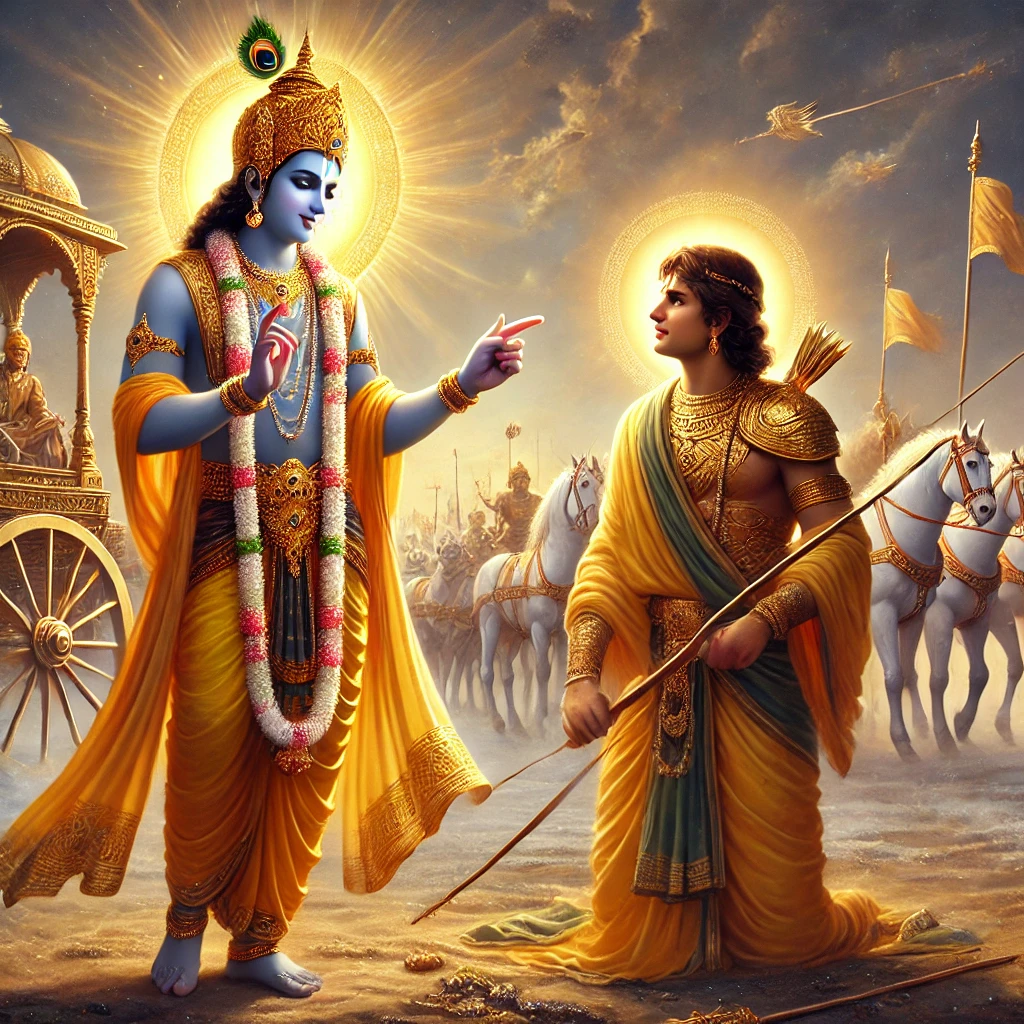The fifth chapter of the Bhagavad Gita, known as Karma Sannyasa Yoga, explores the relationship between action and renunciation. In this chapter, Lord Krishna explains to Arjuna the essence of Karma Yoga (the path of selfless action) and Sannyasa (the path of renunciation), showing how both ultimately lead to liberation when practiced with the right understanding.
Key Themes of Chapter 5
1. Karma Yoga vs. Sannyasa (Renunciation of Action)
Arjuna is confused about whether renunciation (Sannyasa) is better than performing one’s duty (Karma Yoga). Krishna clarifies that both lead to liberation, but the path of selfless action (Karma Yoga) is superior because it allows a person to remain engaged in the world while staying spiritually detached.
“Both renunciation and selfless action lead to liberation, but of the two, Karma Yoga is superior.” (Bhagavad Gita 5.2)
2. The True Renunciate (Sannyasi) Is Detached
Krishna explains that a true renunciate is not someone who simply abandons actions but one who performs them without attachment and desire for personal gain. Such a person is always peaceful and free from bondage.
“He who neither hates nor desires is known as a true renunciate, free from dualities and easily liberated from bondage.” (Bhagavad Gita 5.3)
3. Seeing the Divine in All Beings
Krishna emphasizes the vision of equality (sama-darshana), where a wise person sees all beings—whether a learned scholar, a cow, an elephant, or even a dog—as equal. This is because they recognize the divine soul (Atman) in all.
“The wise see the same divine presence in a Brahmin, a cow, an elephant, a dog, and even in one who eats dogs.” (Bhagavad Gita 5.18)
4. Freedom from Karma and Attaining Liberation
A person who acts without attachment and dedicates all actions to God is not bound by karma. Krishna assures that such a person attains inner peace and liberation (moksha).
“The one who is free from attachment, whose mind is established in knowledge, who works for the sake of sacrifice, is not bound by karma.” (Bhagavad Gita 5.10)
5. The Path to Eternal Bliss
Krishna describes the qualities of a liberated soul:
- Free from anger and desire
- Peaceful in mind
- Content in the self
- Established in divine consciousness
Such a person enjoys eternal bliss (Brahmananda) and merges with the Supreme.
“One who finds happiness within, who rejoices within, who is illumined within, attains the Supreme and becomes one with Brahman.” (Bhagavad Gita 5.24)
Modern Relevance of Chapter 5
- Work Without Attachment: In today’s fast-paced world, Krishna’s teaching of working selflessly helps us focus on efforts rather than worrying about outcomes.
- Equality and Respect for All: Seeing divinity in all beings fosters harmony in society.
- Finding Peace Amidst Chaos: The chapter teaches how to maintain inner peace even while fulfilling worldly duties.
Conclusion
Chapter 5 of the Bhagavad Gita beautifully bridges the gap between action and renunciation. Krishna reassures that true renunciation is not about abandoning responsibilities but about performing them with a detached mindset. By following Karma Yoga with devotion and wisdom, one can attain spiritual freedom and eternal bliss.
Would you like a deeper explanation of any particular verse from this chapter?

Leave a Reply